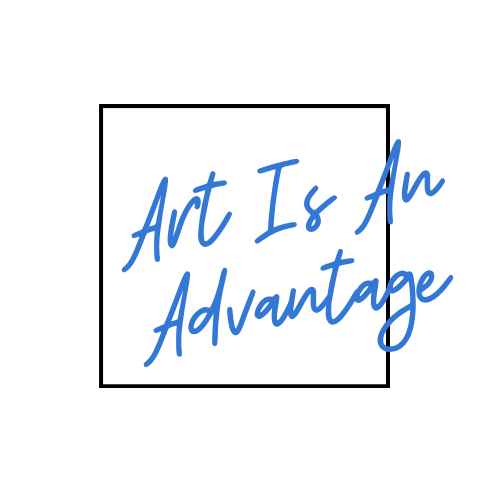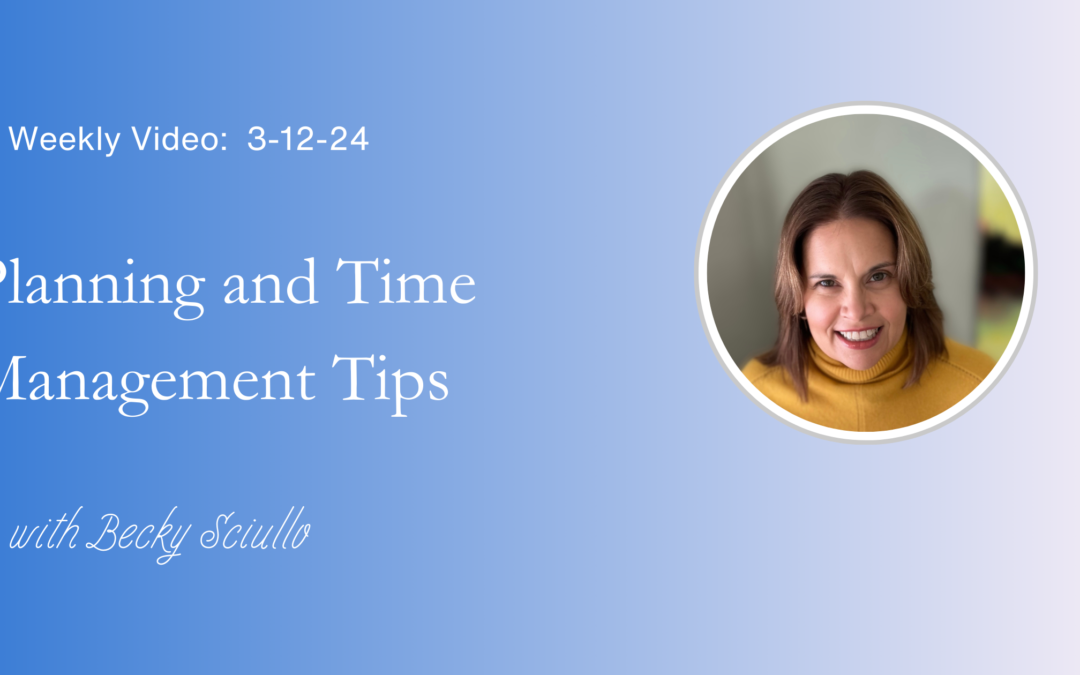
by Rebecca Sciullo | Mar 12, 2024 | Planning, Productivity, Resources, Time Management
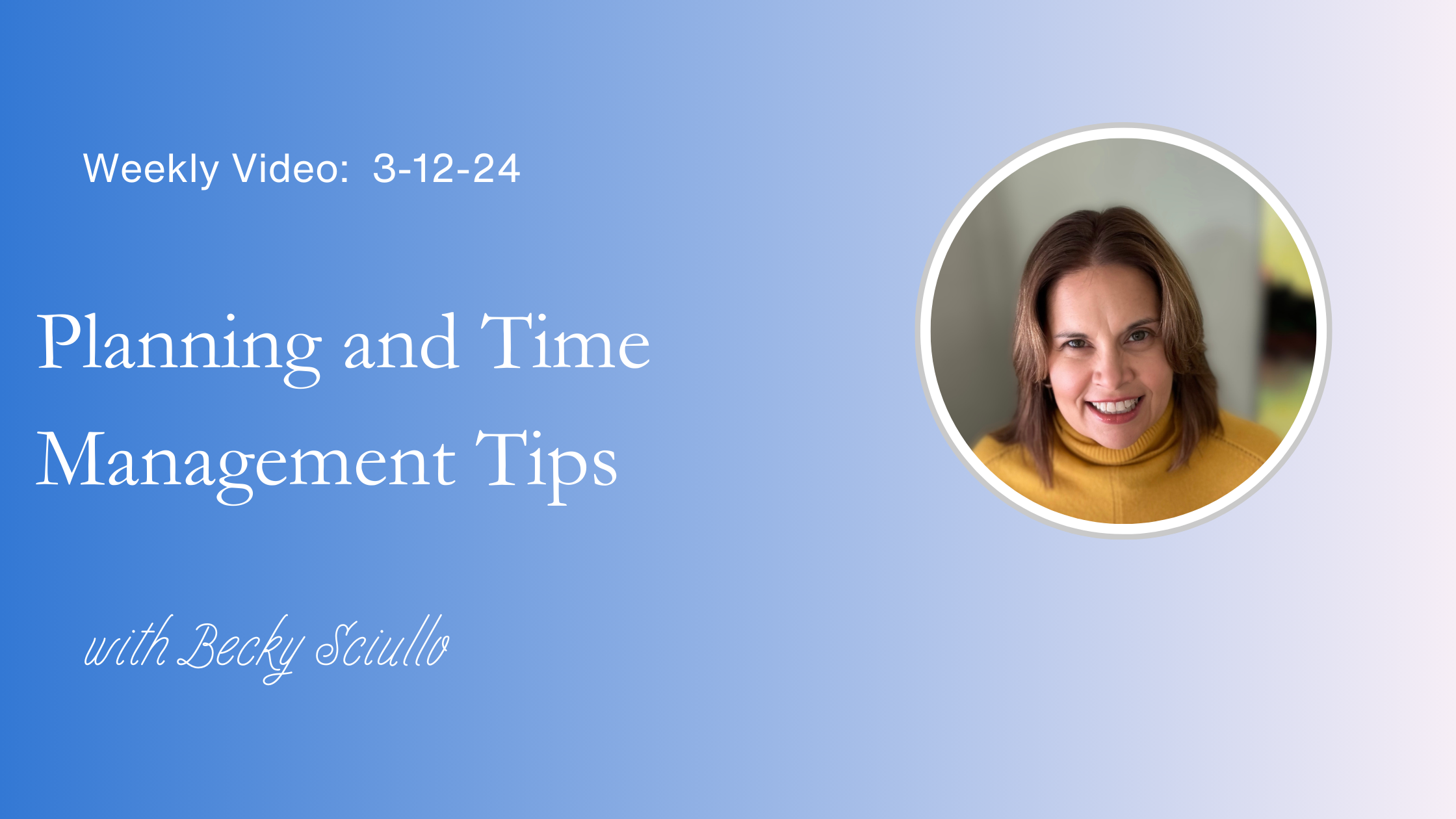
Mastering Time Management and Planning: Your Path to Productivity
This week’s video focuses on some ideas for planning and time management. Recognizing that implementing new marketing strategies sometimes means there is more to do, I share a few ideas around planning and time management that have helped me a lot.
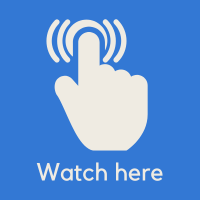
Video Recap
1 – The Rule of 3
I use the number 3 to guide my focus on yearly goals and daily tasks. Choosing three things to strive for or accomplish out of a seemingly never-ending to-do list helps prioritize what needs to be done without getting overwhelmed.
2 – Revisit Your Plans More Than Once a Year
Planning isn’t a once-a-year affair. Establish yearly goals but review them quarterly to adapt to evolving priorities. Break it down further by creating monthly, weekly, and daily plans. This approach encourages flexibility and accomplishment while staying focused on long-term objectives.
3 – Time Blocking
Maximize productivity by scheduling specific tasks and activities on your calendar. Designate dedicated time slots for work projects, studio time, or self-care to stay organized and accountable.
Trust the Process
Remember, progress is about consistent small steps over time. Celebrate each milestone, no matter how small, and trust in the journey toward your goals.
Resources Mentioned in the Video
Create a 12-Month Action Plan: Use the code PLANNING for a 70% discount.
Michael Hyatt’s Full Focus Planner
Join my Weekly Email Newsletter
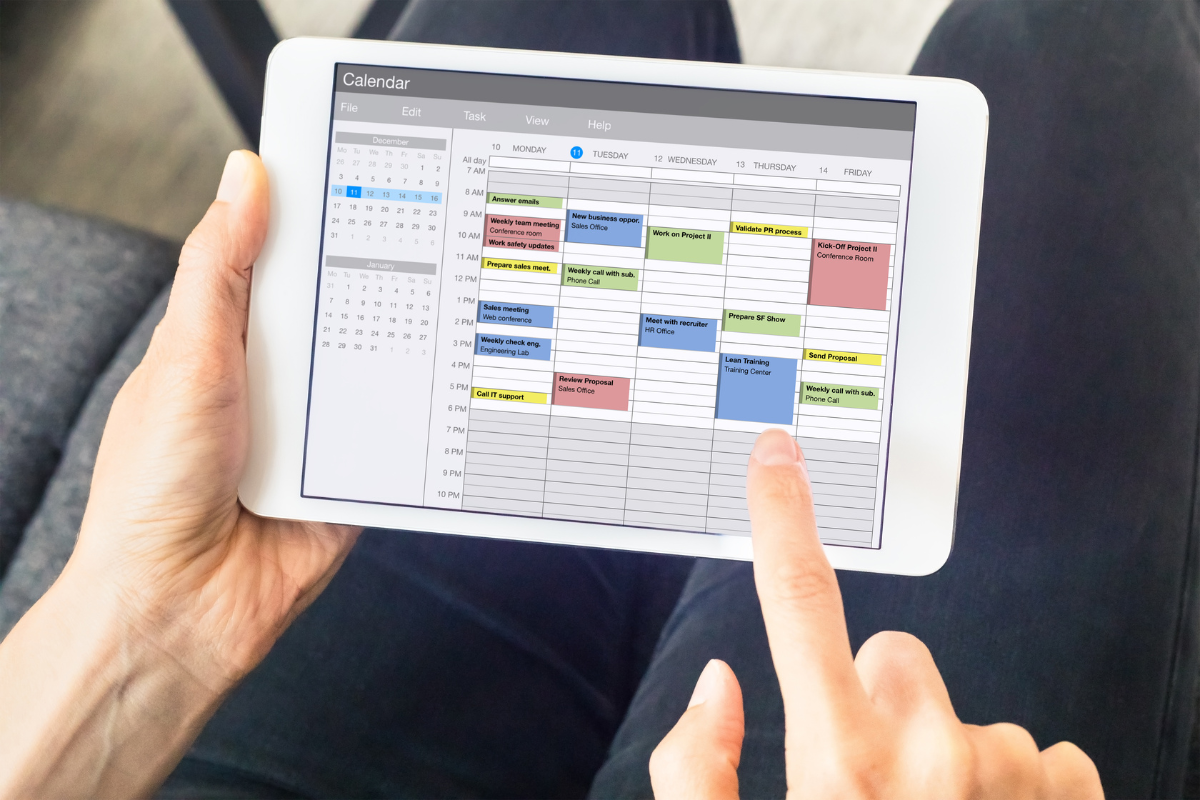
This post contains affiliate links which means I receive a small commission if you make a purchase using the link. For more information, see my full terms here.
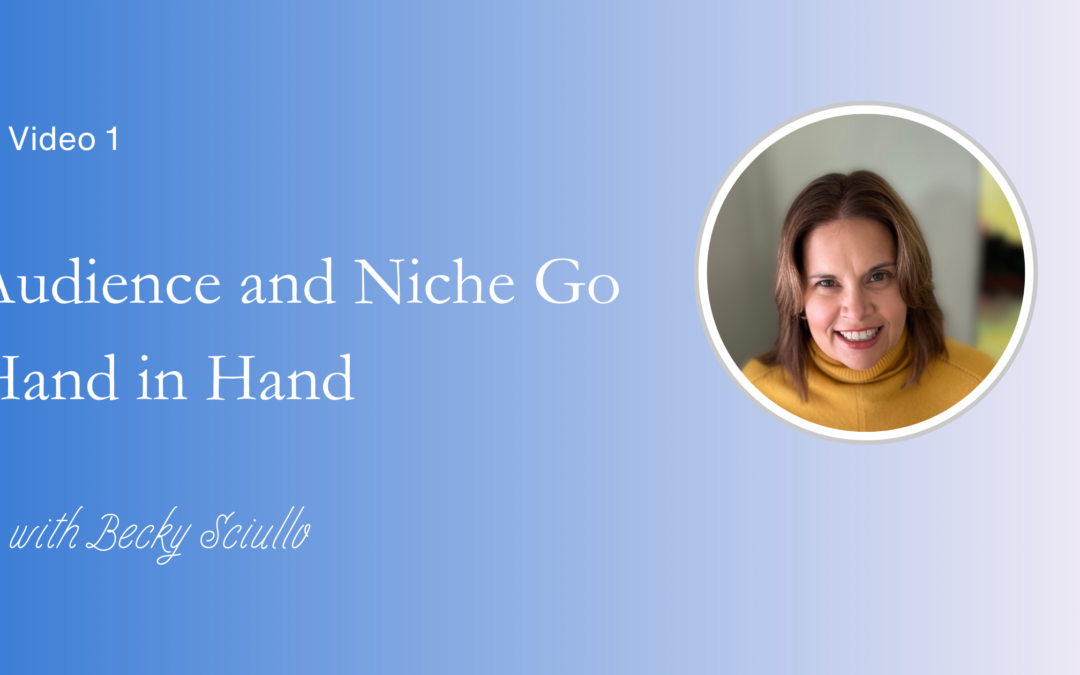
by Rebecca Sciullo | Mar 7, 2024 | Audience
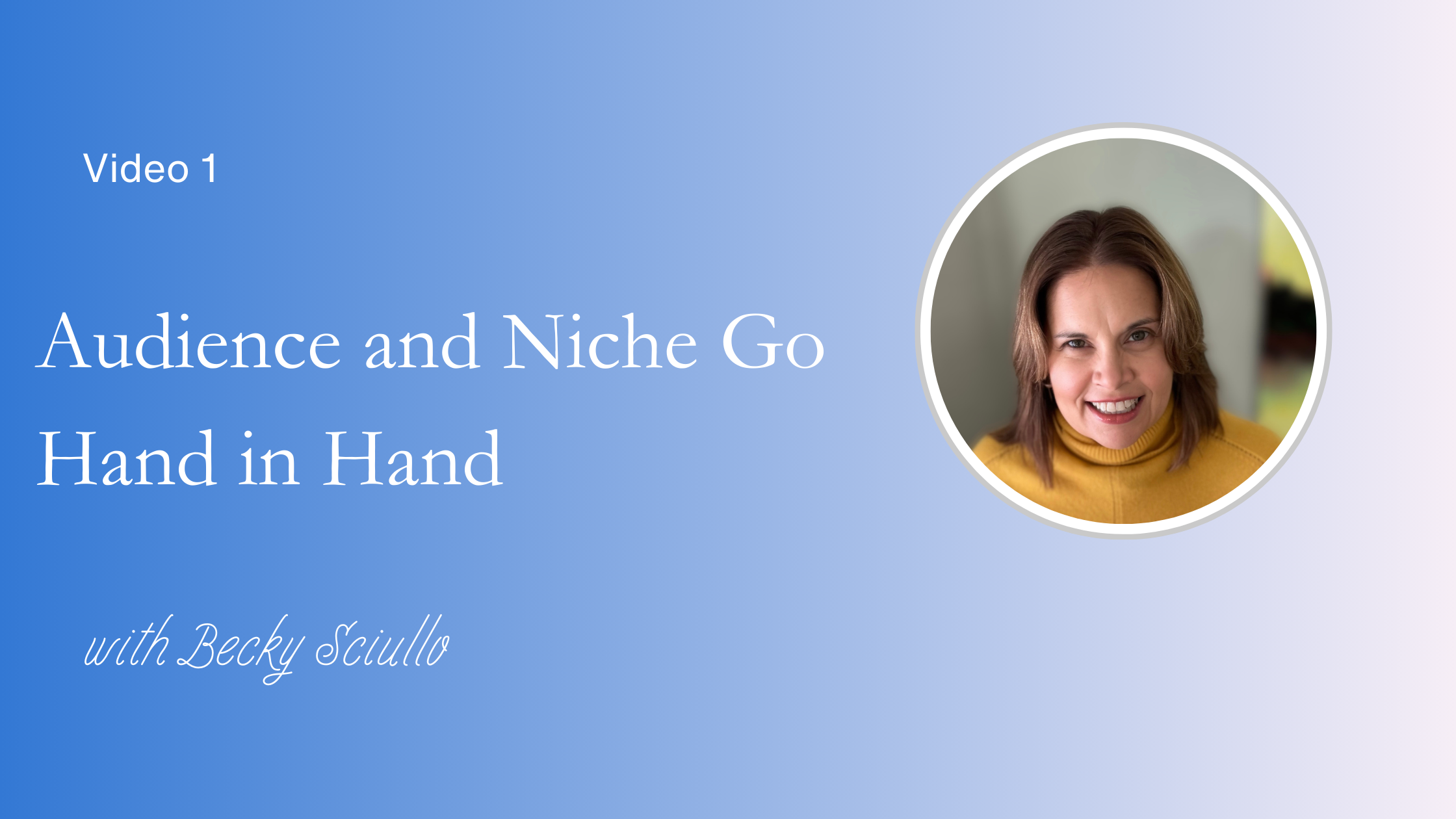
This first weekly video explores the terms niche and audience and how they work together. Then, we discuss first thoughts on identifying your niche audience. It starts with discovering your unique artistic voice and understanding what sets your work apart. You’ll uncover valuable insights into your niche audience’s preferences by paying attention to who’s drawn to your art and why.

Links mentioned in the Video:
Get the free Guide: 7 Steps to Market Your Art to a Niche
Get weekly updates so you never miss a video.
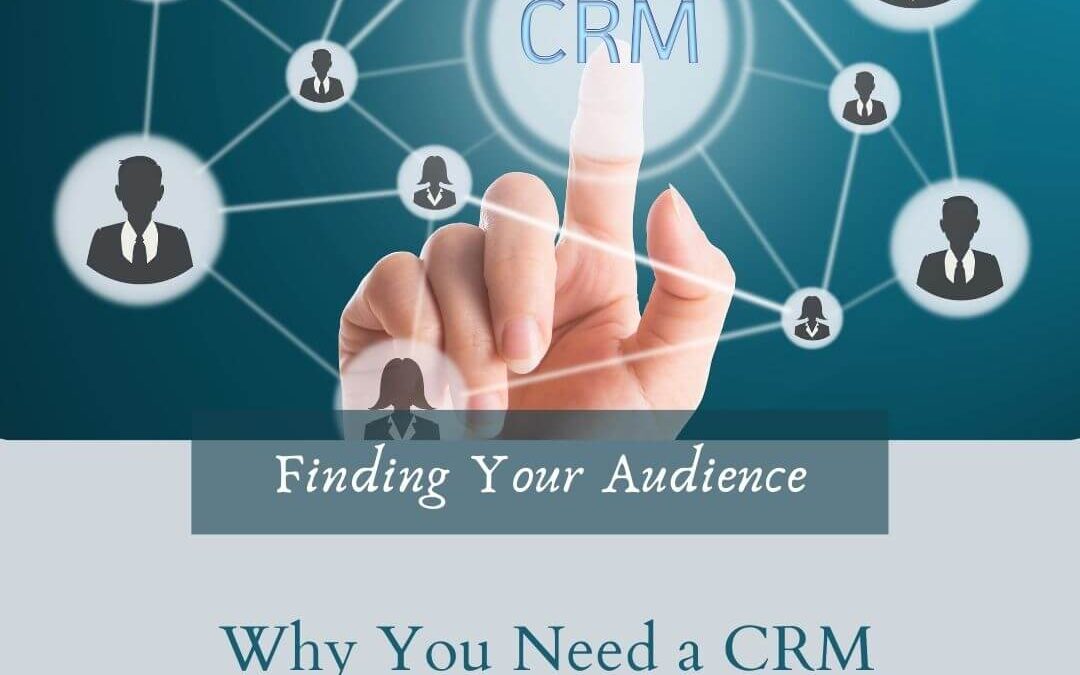
by Rebecca Sciullo | Feb 15, 2024 | Audience
Whether you’re a painter, sculptor, photographer, or any other visual artist, connecting with your audience is critical to success. This blog post series focuses on finding and cultivating an audience. So far, we’ve tipped the surface of this topic with an overview of a target audience and how to create a buyer persona. Before we go any further, I’d like to cover setting up a CRM system.
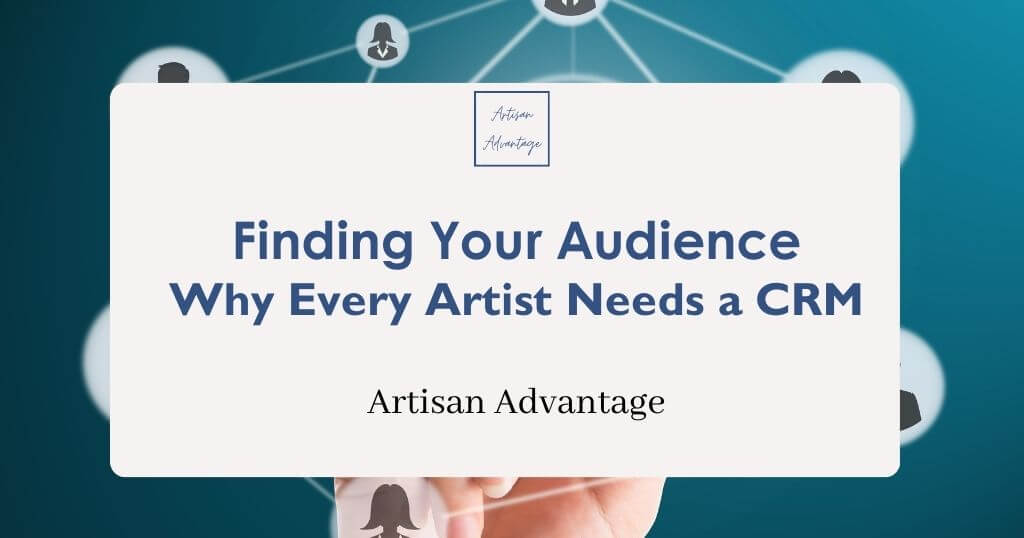
What is a CRM?
CRM stands for Customer Relationship Management, and it’s not just for sales teams or large corporations. At its core, a CRM is a tool designed to help businesses manage customer interactions and relationships. You can use a CRM system to organize contacts, track interactions with potential collectors, schedule follow-ups, and segment audiences based on preferences. This practice helps build and maintain relationships, understand collector needs, and strategically target marketing efforts for audience expansion and retention.
Set Your CRM Up Sooner Rather Than Later
Here’s why every artist should proactively have a CRM in place:
1 – Centralized Contact Management
As an artist, you’ll interact with many people – collectors, gallery owners, fellow artists, and fans. Keeping track of all these contacts can be overwhelming without a centralized system. A CRM allows you to store and organize contact information in one place, making it easy to manage your network.
2 – Track Audience Interactions
A CRM enables you to track interactions such as email inquiries, social media engagement, event attendance, and purchases. By monitoring these interactions, you will have a better idea of how people are finding you and responding to your work.
3 – Personal Engagements
One of the most significant benefits of using a CRM is the ability to personalize your interactions with your audience. By segmenting your contacts based on interests, location, or purchase history, you can tailor your communication to better resonate with each segment. Whether sending personalized emails, offering exclusive promotions, or inviting local supporters to your events, a CRM allows you to engage with your audience on a deeper level.
4 – Consistent Follow-Up
Building relationships takes time and effort. With a CRM, you can set reminders and automate follow-up tasks so you stay connected with your audience. Whether following up on a potential commission, sending a thank-you note to a collector, or reaching out to attendees after an exhibition, a CRM helps you maintain consistent communication and nurture relationships over time.
If you’re serious about finding and growing your audience as an artist, having a CRM in place is essential. A CRM can help you manage contacts, track audience interactions, personalize engagement, and stay organized. By proactively managing your relationships with your audience, you can build a loyal following that supports your art for years to come.
Are you Using a CRM?
Are you using a CRM that you love? I’d love to hear from you. I’ll focus on CRM options for artists in a future blog post.
Don’t miss another post. Sign up for my weekly information drop here, and I’ll let you know when the post is live.
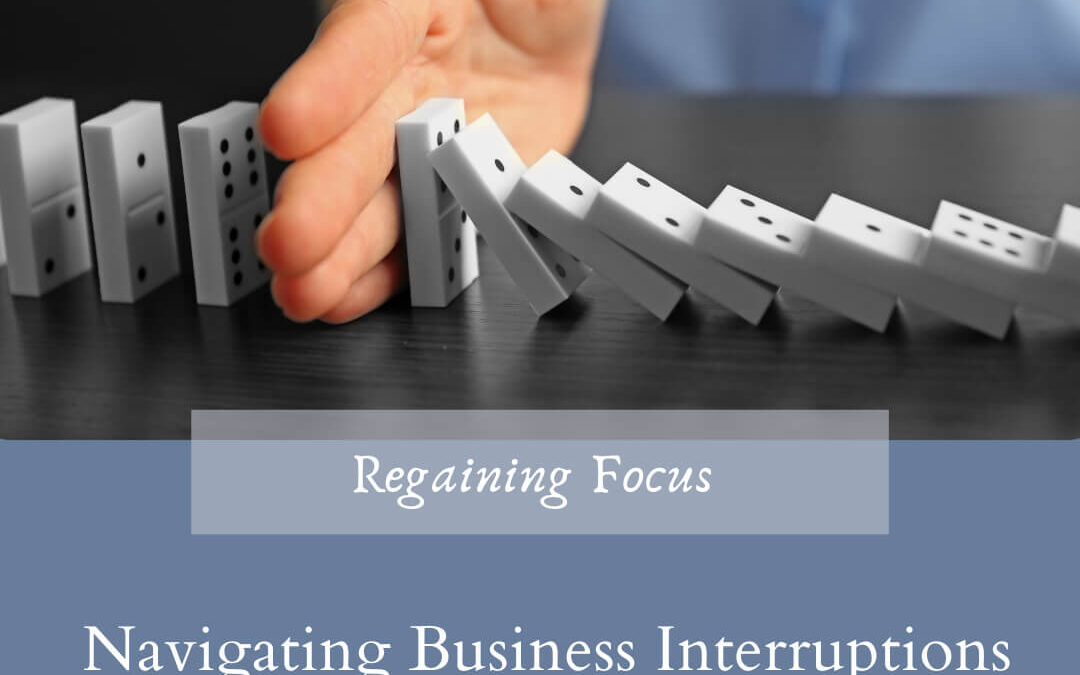
by Rebecca Sciullo | Feb 2, 2024 | Productivity
Business Interruptions are a Normal Part of Your Art Business
Running a solo business, like many art ventures, can come with unexpected interruptions that disrupt your daily plans. Whether it’s a technical problem stopping your progress or a personal project needing attention, these interruptions can throw off your workflow and make it harder to get things done. However, having a plan to deal with interruptions can help you handle these challenges and get back on track, which is crucial for keeping up your momentum and making the most of your time.
Life Happens
This week, I faced two situations that interrupted my business – first, a technical glitch, and then a positive development around a vacation that needed urgent planning. It got me thinking about this topic, and I wanted to share some ideas for handling business interruptions and getting back to being productive.
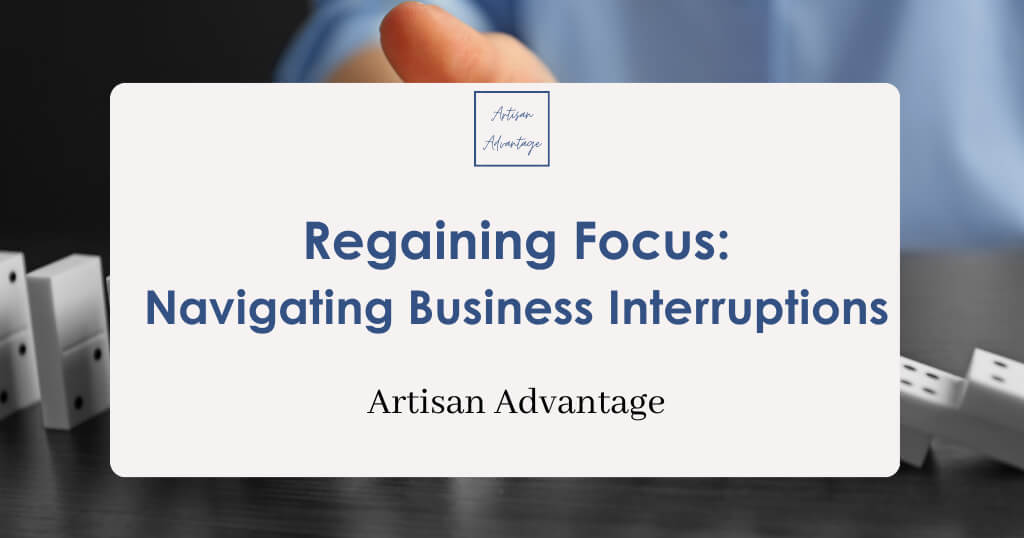
The Impact of Interruptions
When running a solo business, you must manage many tasks at once. Interruptions, like technical issues or personal projects, can be especially frustrating, as it can feel some days like it’s impossible to get anything accomplished. You might feel overwhelmed and unsure about what to do next, especially if you don’t have an assistant to help with some of your business tasks.
Strategies for Regaining Focus
Here are some strategies to regain focus when life or technical issues slow you down.
1 – Assess the Situation
When something interrupts your business, take a step back and determine how serious it is. Decide what needs to be dealt with first by considering what’s most urgent or essential. Doing this will help you focus your efforts and get back on track faster. Are you getting distracted by things that require your attention at that moment, or are you being pulled simply because the issue has presented itself?
For example, my technical situation was time-sensitive as the issue was causing my website to be offline. So, it was an important issue to fix, and I had to take time to solve it immediately. However, I often get personal calls from my family and friends that are less urgent, and I’ve learned strategies for blocking my time to avoid those types of things over the years so they don’t take me off track.
2 – Seek Help
It’s okay to ask for help when you need it. Whether getting advice from other business owners online or hiring someone to help with specific tasks, don’t hesitate to ask for support. YouTube can be an excellent place to find quick help for technical how-to videos. There are also communities like the Artisan Advantage Facebook Community where you can ask questions and get help from fellow artists. Find out resources that you need regularly and keep them handy.
3 – Set Realistic Goals
Be honest about what you can get done in a certain amount of time, especially when balancing personal projects and business tasks. Break big tasks into smaller ones to make them easier to tackle. Setting achievable goals will help you stay on track even when things get hectic.
4 – Stay Flexible
Managing the situation when unexpected things happen is essential for solo business owners. Be ready to adjust your priorities if something comes up. Staying flexible will help you deal with obstacles and keep your business running smoothly. My personal project involved travel and required quick decision-making and a few lengthy phone calls. Since I knew I had to table my business plans that morning to shift into travel planning mode, I looked at my schedule and decided when to make up that time. That helped me move forward with some peace of mind, knowing I would eventually return to my business activity.
5 – Take Care of Yourself
Remember to take care of yourself, especially during stressful times. Take breaks when needed, do things that help you relax, and don’t be afraid to ask for help if you feel overwhelmed. Taking care of yourself will help you stay productive and focused.
It Helps to Have a System
Even though running a solo business can be challenging, having a plan for dealing with interruptions can help you stay on track. By setting up a routine for how you work and when you do specific tasks, like marketing your business, you can get back to business quickly when something comes up.
Navigating interruptions as a solo business owner can be challenging, but with the right strategies, you can stay focused and keep your business moving forward. Remember to assess the situation, ask for help when needed, set realistic goals, stay flexible, and take care of yourself. With these tools, you can overcome any obstacles that come your way and keep your business running smoothly.
Would you like to join the Artisan Advantage Facebook Community? While artists can post questions at any time, we also have a live weekly Q&A where I take questions related to your art business.
Join the Facebook Group here.
Do you need a plan of action? Get your 12-Month Action Planning Guide here.
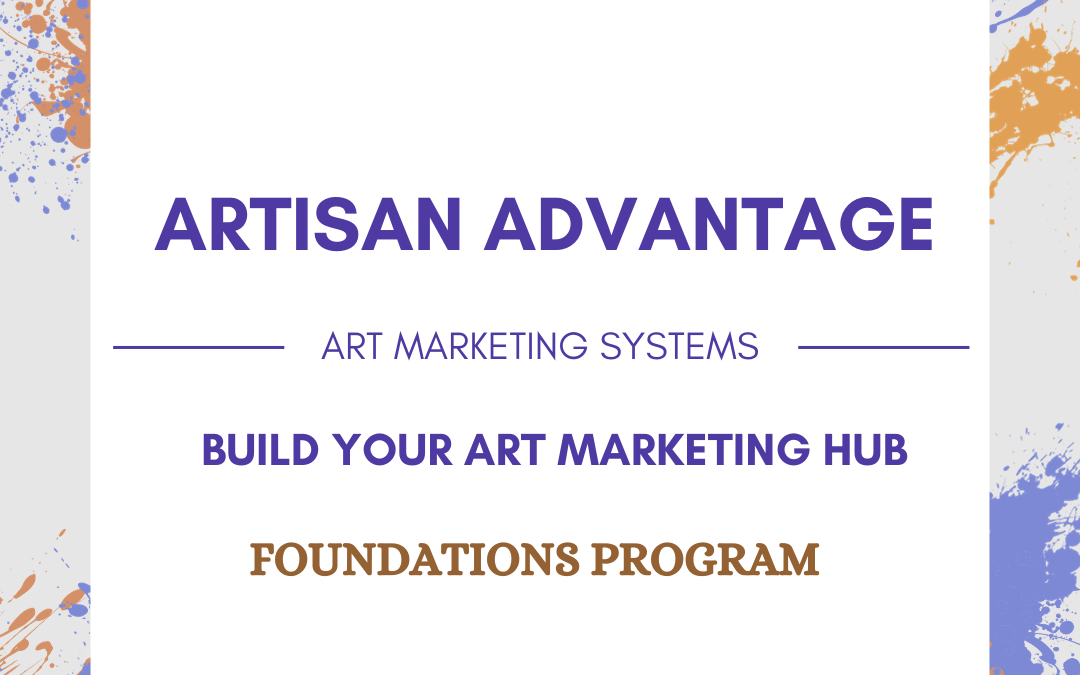
by Rebecca Sciullo | Jan 25, 2024 | Learning
The Foundations Pilot Program starts soon! Enroll in Course One as a pilot member and receive focused and direct assistance in building your art marketing hub.
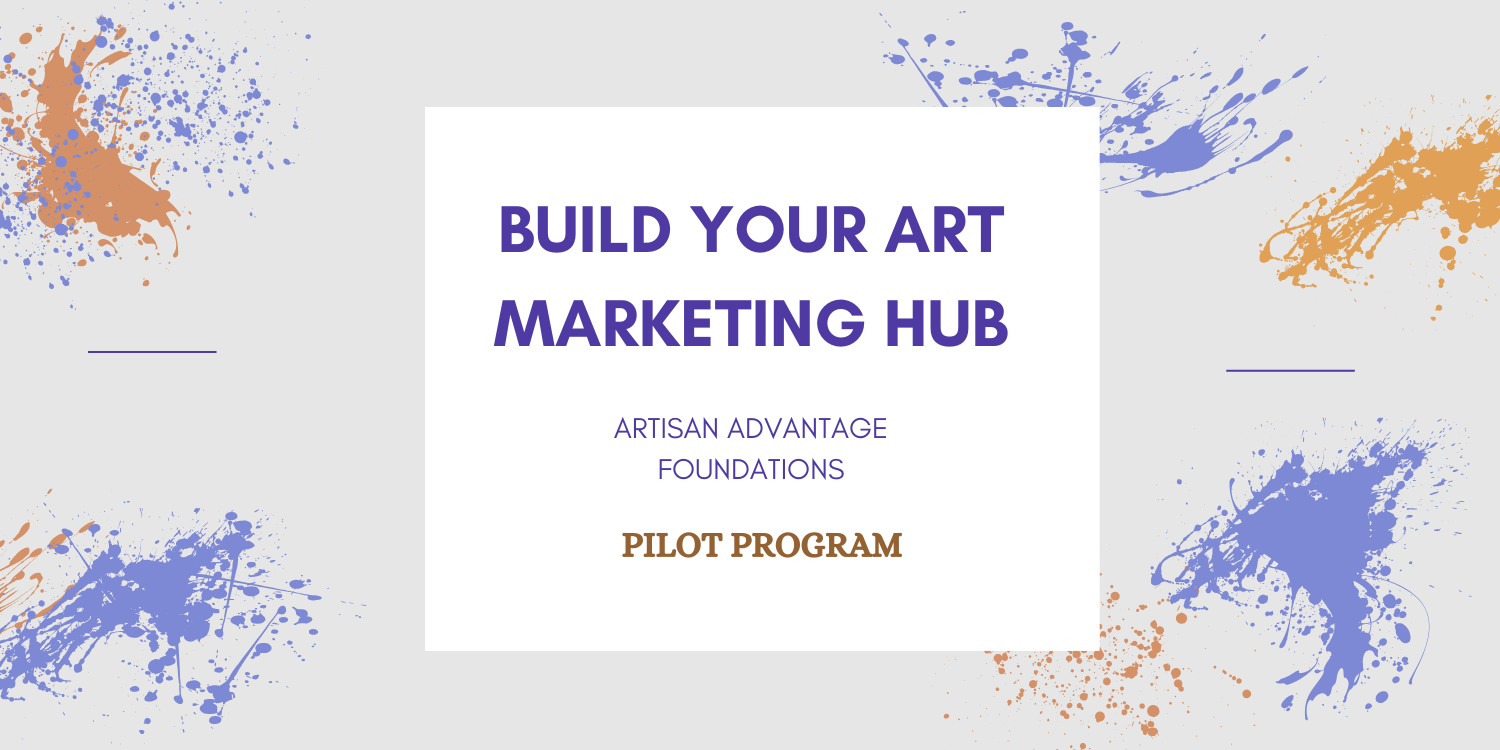
Frequently Asked Questions about this Program
What will I learn in Build Your Art Marketing Hub?
This program will walk you through setting up your artist website to serve as the central hub for your art marketing system. We begin looking at your big picture and what you want to achieve for your art career and business. From there, we walk through setting up your website to serve your vision.
How is this program delivered?
Bi-weekly presentations and live Q&A will take place via Zoom.
Videos and other course materials will be accessed via Google Drive and a Learning Management System called Xperiencify.
Will this cover the cost of my website?
The $199 enrollment fee for this Program does not include any costs associated with purchasing a website builder or extra software that you might want to use in your art marketing efforts.
If you currently have a website, in most cases, you can use that site for this Program. If you need a website, I will make some recommendations for services that you might consider.
I strive to provide you with free resources as often as possible. As with any business, at times, you may need to purchase a tool to help with your marketing efforts. Occasionally, I may recommend a paid service to enhance your art marketing hub, but I will offer free solutions when possible.
You mention other courses as part of the program. What are you referring to?
Building your Art Marketing Hub is the first course in a series of three that will eventually make up the Artisan Advantage Foundations Program. The second course will be “Finding Your Audience,” and the third will be “Strategic Marketing Channels.” This Pilot program is for Course One only – Build Your Art Marketing Hub. If you enroll in this course, you are guaranteed a spot if you want to enroll in subsequent Foundations Pilot Courses.
Why are you offering this as a pilot? Why not just start the program?
This Pilot will take a small group through the first part of the program. The feedback from the Pilot will help in the final creation of the three-part program.
Do I have to attend live?
While the program will offer live sessions every two weeks, I will record each for future access. You can access all course materials to use at your own pace. You will have access to the materials for as long as the course exists.
What if I can’t keep up with the live schedule?
While I encourage you to participate as much as possible in real-time, you can access the recordings and materials at your own pace.
Why should I participate in the Pilot Program? Why not wait for the entire course?
Once all three courses are piloted, the discounted price will not be available. Also, the final program may not have as much hands-on assistance. As a pilot participant, I want to work directly with you as you build your system.
You will enjoy the following benefits:
Discounted Pricing
You will have access to the Building Your Art Marketing Hub Course at a special discounted rate of $199, compared to the Course price of $495.
Direct Assistance
This course participant list is limited, so I can work directly with artists as they need assistance. The live program will not have the level of interaction with individual artists as the pilot program.
First-Dibs at Future Pilot Programs
Participation in this Pilot guarantees you a spot if you want it in the following two-course pilots,
By participating early on, you not only avail yourself of valuable insights and strategies to enhance your art marketing but also contribute to the refinement of the program for future artists
What is the Program Format
Live Presentations Every Two Weeks (Recordings provided)
Every two weeks, a live presentation will kick off each module.
Between the live presentations, you will have access to resources and supplemental material to complete the action steps for that module.
How do Weekly Office Hours Work?
I will be available via Zoom for live Q&A and hands-on help every week for a 90-minute optional group session. You can send questions in advance or log on live to ask questions. Participants can screen share for direct input on their work.
How does Email Support work?
I will be available via email to answer questions from 8 am to 5 pm EST, Monday through Friday. There will be a dedicated email box where you can submit questions.
What time is the presentation?
The pilot program starts on Friday, February 9, with a live presentation at 11:00 am. This will be the date for the first class. You will have access to the recording if you cannot attend on the 2nd. Live presentations will occur every other week at this time.
To secure your spot as one of the participants, please enroll here. I will provide further details closer to the date to ensure you have all the information you need for the first session.
Questions, drop me a line at becky@artisan-advantage.com.

